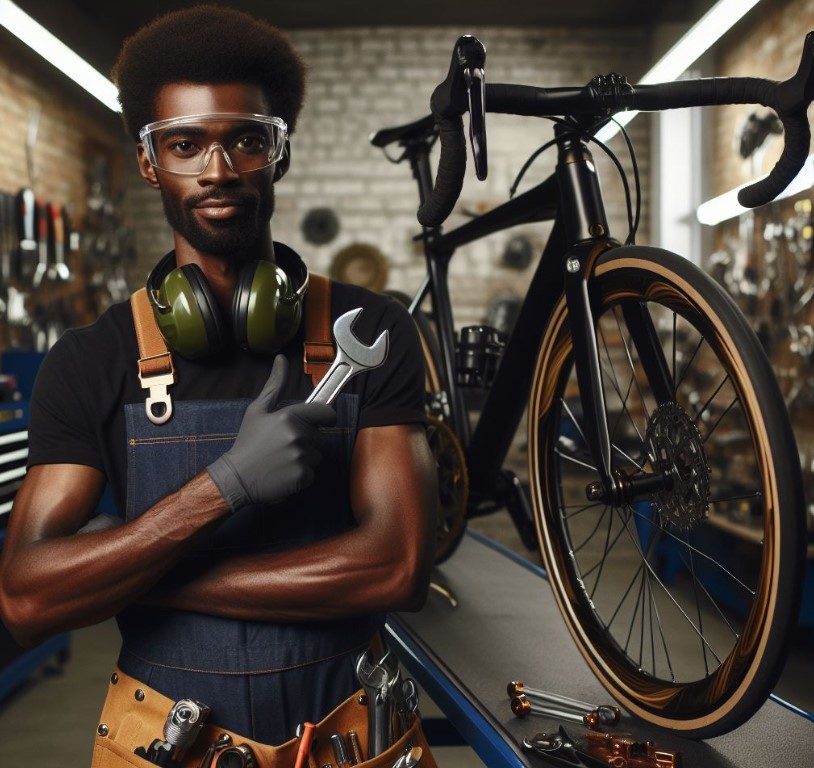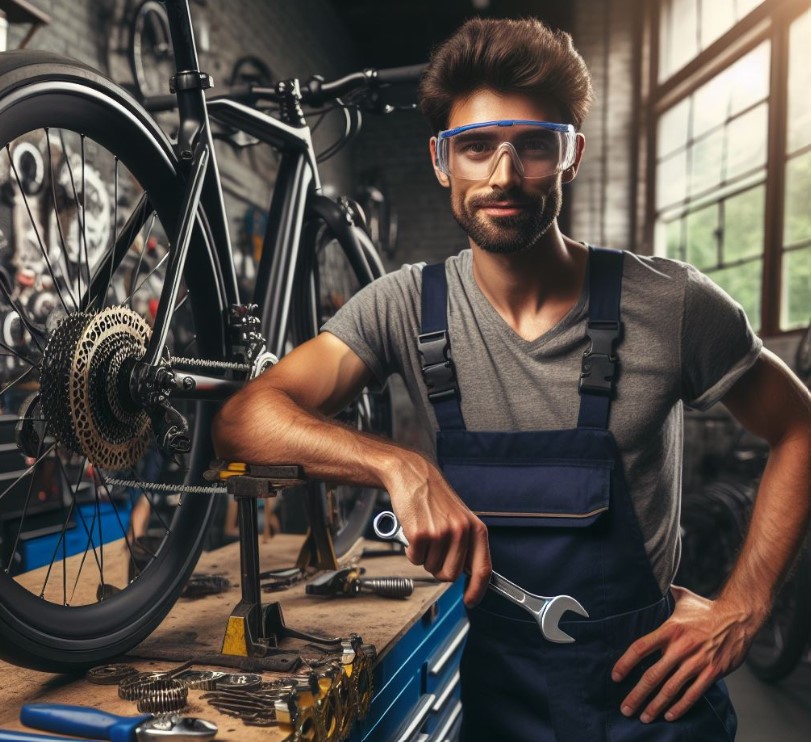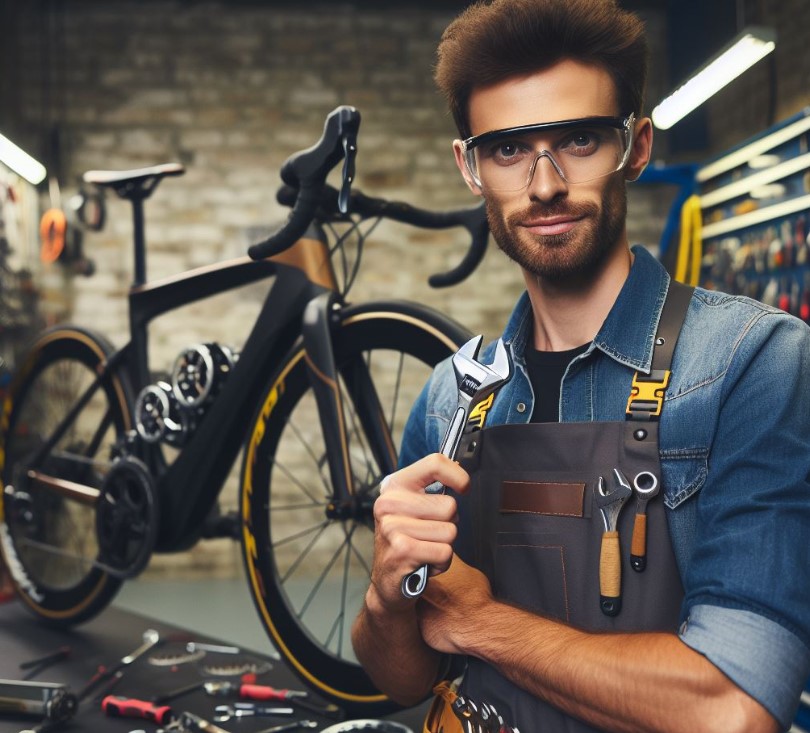Can You Add Gears To A Bike? Quick Answer
This article will explain Can You Add Gears To A Bike? Exploring whether you can add gears to a bike reveals a world of customization, enhancing your ride for various terrains. This journey from single-speed simplicity to geared versatility opens up new possibilities for cyclists seeking more control and efficiency.
Key Takeaways
- Adding gears to a bike is possible and beneficial for a more versatile riding experience.
- The process varies in complexity and cost, depending on the bike’s current setup and the desired outcome.
- Understanding the basics of bike mechanics or seeking professional help is crucial for a successful upgrade.
Can You Add Gears To A Bike?
Yes, you can add gears to a bike, although the process varies by bike type and desired gear system, involving considerations for compatibility, cost, and mechanical adjustments.

Understanding the Basics of Bike Gearing
Before diving into the mechanics of adding gears, it’s essential to grasp the fundamentals of bike gearing. Gears influence the speed and effort required to pedal, making your ride smoother or more challenging depending on the terrain.
Types of Gear Systems
There are mainly two types of gear systems: derailleur and hub gears. Derailleurs are common in road and mountain bikes, offering a wide range of gear. Hub gears, integrated into the wheel’s hub, are found in city bikes for their simplicity and low maintenance.
Choosing the Right Gear System
Deciding on the right gear system involves considering your riding style, the terrains you frequent, and your bike’s compatibility. Derailleurs offer more gear options but require regular maintenance, while hub gears provide ease of use and resilience to weather conditions.
The Process of Adding Gears to Your Bike
Adding gears to a bike can range from a straightforward task to a complex project requiring professional assistance. The process involves several steps, from selecting the appropriate gear system to the final adjustments for optimal performance.
Selecting the Gear System
Your choice of a gear system significantly impacts the installation process. It’s crucial to assess the compatibility of your bike frame with the desired gear system, as some may require additional modifications.
Installation Challenges and Solutions
The installation process may present challenges, especially for those new to bike mechanics. Seeking advice from cycling forums or professional bike mechanics can provide valuable insights and help avoid common pitfalls.
The Benefits of Upgrading Your Bike with Gears
Enhancing your bike with gears not only broadens the scope of your cycling adventures but also improves overall ride comfort and efficiency. It allows for a more tailored riding experience, adapting to various terrains with ease.
Improved Riding Efficiency
With gears, you can maintain a constant pedaling speed, reducing fatigue and increasing the distance covered without exerting extra effort. This efficiency is particularly beneficial on mixed-terrain rides.
Enhanced Comfort and Enjoyment
The ability to switch gears according to the terrain significantly enhances riding comfort, making steep climbs more manageable and descents more controlled. This upgrade can reignite your passion for cycling, encouraging more frequent and adventurous rides.
Considerations Before Adding Gears
Before proceeding with adding gears to your bike, several factors need consideration. These include the cost implication, the compatibility of your bike with the new gear system, and whether the upgrade meets your cycling needs.
Assessing Compatibility and Cost
Evaluating your bike’s frame and existing components is crucial to determining the feasibility of adding gears. Additionally, setting a budget for the upgrade can guide your decisions regarding the gear system and necessary tools.
Determining Your Cycling Needs
Reflect on your cycling habits and preferences. If your rides are predominantly on flat terrains, the need for gears might be minimal. However, for varied or hilly terrains, gears can significantly enhance your cycling experience.
Maintenance and Upkeep
With the addition of gears comes the responsibility of regular maintenance to ensure optimal performance and longevity of your bike. Understanding the basics of gear maintenance can save you time and money.
Routine Checks and Adjustments
Regularly checking your gears for wear and proper alignment can prevent most issues. Learning to adjust your gears can also enhance your cycling experience, making each ride smoother and more enjoyable.
Professional Services
While DIY maintenance is achievable, certain situations may require professional help. Establishing a relationship with a local bike shop for regular check-ups can keep your bike in top condition and ensure a safer ride.
Can You Convert A Single Speed Bike To Geared?
Converting a single-speed bike to a geared one is indeed possible. Still, the feasibility and complexity of this conversion depend on several factors, including the bike’s frame design and the desired gear system.

Single-speed frames are not typically designed with the necessary mounts and spaces for gear components such as derailleurs and gear shifters. However, with modifications or by using certain adaptors, you can overcome these limitations.
The process usually involves adding a rear derailleur, a geared rear wheel, and shifters, and sometimes modifying the frame to accommodate these parts.
It’s crucial to assess whether the bike’s frame has enough clearance for a wider rear hub and if a derailleur has mounting points. A professional assessment is recommended to ensure the integrity of the bike is not compromised and the conversion is safely achievable.
Can I Change The Number Of Gears On My Bike?
Yes, changing the number of gears on your bike is possible and can be a great way to customize your riding experience to better suit your needs.
This change can involve replacing the bike’s cassette (the set of cogs on the rear wheel) for one with more or fewer gears and potentially changing the derailleur and shifters to accommodate the new range.
The primary considerations for such a modification include the compatibility of the new gears with your bike’s existing components and ensuring that the rear derailleur can handle the size of the new cassette.
It’s also important to consider the width of your bike’s rear hub, as this can limit the size of the cassette you can install. For a successful upgrade, all new components must work harmoniously, requiring careful selection and sometimes additional adjustments to the bike’s drivetrain.
How Do You Convert A Bike To A 3 Speed?
Converting a bike to a 3-speed generally involves installing a 3-speed internal gear hub. This type of gear system encloses the gears within the hub of the rear wheel, offering a clean look and low maintenance compared to external derailleur systems.

The conversion process includes replacing the rear wheel hub with a 3-speed internal gear hub, installing a compatible shifter, and adjusting the chain to fit.
This conversion is popular for those looking to add versatility to single-speed bikes or simplify the gear system on a bike with a derailleur. It’s important to ensure the new hub is compatible with your bike’s frame, particularly the spacing between the rear dropouts.
Additionally, the choice of hub should be guided by the bike’s intended use, as different models offer varying features and shifting experiences.
How Do You Increase Gears On A Bike?
Increasing the number of gears on a bike typically involves either expanding the range of the current gear setup or upgrading to a new system that offers more gear.
This can be achieved by replacing the rear cassette with one that has more cogs, potentially upgrading the rear derailleur to accommodate the larger cassette, and possibly changing the shifters if the new setup requires different functionality.
For bikes with a front derailleur, adding more chainrings in the front can also increase the number of gear combinations. When increasing gears, compatibility between all components (shifters, derailleurs, chain, and cassette) is crucial for smooth operation.
This upgrade can improve the bike’s versatility, making it better suited for a wider range of terrains and riding styles.
Conclusion
Adding gears to a bike is a transformative upgrade that adapts your bicycle to a broader range of activities, from urban commuting to adventurous trail riding. With the right approach and expertise, this modification can significantly enhance your cycling experience.
Top FAQ’s
Can adding gears to a fixed-gear or single-speed bike diminish its value?
Modifying a fixed-gear or single-speed bike to add gears could potentially diminish its value, especially if it’s a vintage or collector’s item. Such modifications often require irreversible changes to the frame or components. It’s essential to weigh the benefits of adding gears against the bike’s original value and character.
What maintenance is required after adding gears to a bike?
After adding gears to a bike, regular maintenance is crucial to ensure smooth operation. This includes cleaning and lubricating the chain, checking the gear alignment, adjusting the tension, and periodically inspecting for wear and tear. Regular tune-ups by a professional can also help maintain optimal performance.
Is it possible to add more gears to a bike that already has gears?
Yes, it’s possible to upgrade or increase the number of gears on a bike that already has a gearing system. This might involve replacing the rear cassette with one that has more cogs, upgrading the derailleur, or switching from a single-speed to a multi-speed hub. Each option comes with its own set of considerations and compatibility issues.
How long does it take to add gears to a bike?
The time required to add gears to a bike varies based on the complexity of the upgrade, your mechanical skills, and whether you have all the necessary tools and parts. Simple installations might take a few hours, while more complex conversions could require a full day or more, especially if you’re learning as you go.
How do I choose the right gear system for my bike?
Choosing the right gear system depends on your riding style, typical terrain, and personal preferences. Derailleur systems offer a wider range of gears and are suited for performance-oriented bikes, while hub gears are ideal for urban or casual riders seeking simplicity and low maintenance. Consider consulting with a bike specialist to find the best fit for your needs.

Welcome to the exhilarating world of Matt Rex, a professional car racer turned renowned vehicle enthusiast. Immerse yourself in his captivating blog as he shares heart-pounding adventures, expert reviews, and valuable insights on cars, trucks, jets, and more. Fuel your passion for speed and discover the beauty of vehicles through Matt’s engaging stories and meticulous expertise. Join the ever-growing community of enthusiasts who find inspiration and expert advice in Matt Rex’s blog—a digital hub where the thrill of speed meets the pursuit of knowledge.







